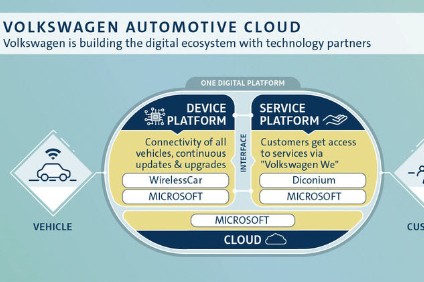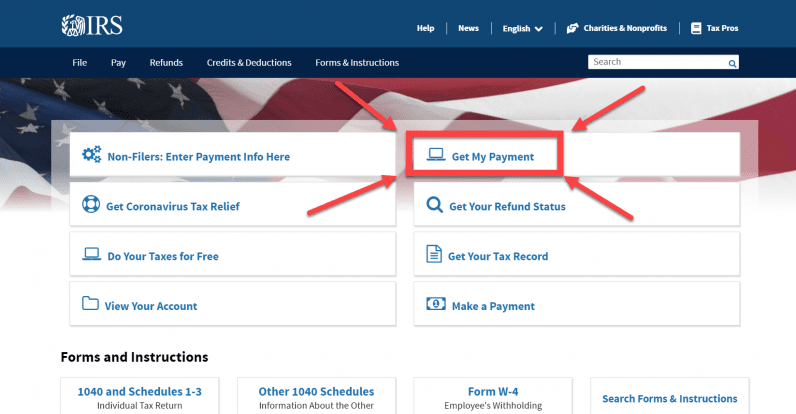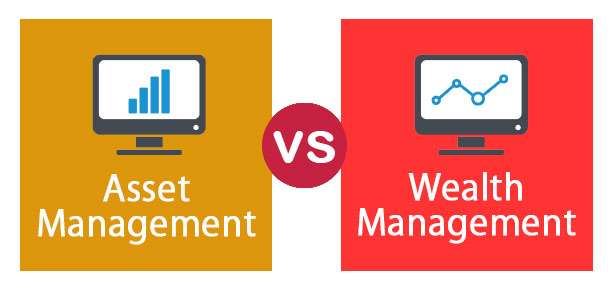7 Best-Performing Commodity ETFs for 2023

The lower the average expense ratio for all U.S.-listed ETFs in an asset class, the higher the rank. KMET, which turns a year old next month, follows the Bloomberg Electrification Metals Index. That gauge is comprised of futures contracts of aluminum, copper, nickel, zinc, cobalt, and lithium. These are metals that are essential to driving the global renewable energy boom. That makes KMET a relevant play on the Inflation Reduction Act and recent data from S&P Global confirms as much.

Access to Electronic Services may be limited or unavailable during periods of peak demand, market volatility, systems upgrade, maintenance, or for other reasons. Commodity ETFs are exchange-traded funds (ETFs) that provide exposure to the price changes of raw materials, such as agricultural goods, natural resources, or metals. The investing information provided on this page is for educational purposes only. NerdWallet, Inc. does not offer advisory or brokerage services, nor does it recommend or advise investors to buy or sell particular stocks, securities or other investments. Some 50 commodities ETFs trade in the U.S., excluding inverse and leveraged funds as well as those with less than $50 million in assets under management (AUM).
iShares S&P GSCI Commodity-Indexed Trust
As you might have guessed, physically-backed ETFs hold physical commodities in their possession. Having physical possession of a commodity eliminates both tracking and counterparty risk. Investopedia defines tracking error as the instance when an investor experiences a divergence between their returns, versus what they were benchmarking their fund’s performance against. According to the Office of the Comptroller of the Currency, counterparty risk is the likelihood that the other party in an investment transaction wouldn’t uphold their end of a deal or contractual obligations. The name says it all with the Invesco Optimum Yield Diversified Commodity Strategy No K-1 ETF (PDBC, $15.03).
9 Best Commodity ETFs to Buy Now – Kiplinger’s Personal Finance
9 Best Commodity ETFs to Buy Now.
Posted: Thu, 16 Sep 2021 20:09:19 GMT [source]
BDRY’s holdings consist of freight futures and reflects daily price movements. Commodities are a great way to balance out your portfolio and diversify risk. This is because historically, commodities as an asset have a negative correlation against other assets, such as stocks or bonds. That means that when the value of one asset class goes up, the other goes down, and vice versa. The second type of commodity ETF is exchange-traded notes, or ETNs.
ETFs: ETF Database Realtime Ratings
Should you favour a traditional front-month rolling ETF like GSG or an optimized ETF like USCI? When the commodity markets would move in contango, this would be bad news for front-month rolling ETFs. But even with the markets in backwardation USCI is already outperforming. The screening applied by the fund’s index provider may include revenue thresholds set by the index provider.
The firms are uniquely positioned to aid advisor’s education, adoption, and usage of ETFs, as well as the asset management community’s transition from traditionally analog to digital interactions with the advisor community. However, buying and holding gold yourself is a hassle – there is always the risk of theft, it takes up a lot of space, and you’ll need to insure it. If you want to invest in gold, consider investing in a gold ETF such as the SPDR Gold Trust (GLD) to take the pain points out of investing in gold.
Shares of ETFs are bought and sold at market price, which may be higher or lower than the net asset value (NAV). While we believe the information provided herein is reliable, we do not warrant its accuracy or completeness. The views and strategies described in our content may not be suitable for all investors. Because market and economic conditions are subject to rapid change, all comments, opinions, and analyses contained within our content are rendered as of the date of the posting and may change without notice. The material is not intended as a complete analysis of every material fact regarding any country, region, market, industry, investment, or strategy.
Most ETFs are focused on just one type of commodity, but the way they are invested can vary. Some can hold the commodity in physical storage, in futures contracts, or track their performance by index. The metric calculations are based on U.S.-listed ETFs that are classified by ETF Database as being mostly exposed to a specific asset class. If an ETF changes its asset class classification, it will also be reflected in the investment metric calculations. The fund is a commodity pool targeting one of the most widely used agriculture products globally and its holdings are solely of corn futures contracts of multiple maturities. Corn is used as feed, fuel, starch, sweetener, and even in plastic.
USL, or United States 12 Month Oil Fund is one of the top oil funds. The way it is structured has helped minimize volatility, thus making it more popular than some of its counterparts. There are commodity funds that invest in companies that either produce, transport, or store commodities. These funds allow investors to get access to a specific sector, or multiple companies, but in a way that’s much less expensive than investing in the companies themselves. The Charles Schwab Corporation provides a full range of brokerage, banking and financial advisory services through its operating subsidiaries.
(The term is “negative roll yield,” if you want to get sophisticated.) This cost reduces returns and can cause the ETF to drag, making it difficult to track the commodity’s spot price. U.S.-listed commodity ETFs are ranked based on their AUM-weighted average expense ratios. The lower the average expense ratio for all U.S.-listed ETFs in a commodity, the higher the rank. Investment returns will fluctuate and are subject to market volatility, so that an investor’s shares, when redeemed or sold, may be worth more or less than their original cost. Shares of ETFs are not individually redeemable directly with the ETF.
The information displayed on this website may not include all of the screens that apply to the relevant index or the relevant fund. These screens are described in more detail in the fund’s prospectus, other fund documents, and the relevant index methodology document. View charts that break down https://1investing.in/ the influence that fund flows and price had on overall assets. Silver tends to have more common applications in industry, such as solar panels, medical devices, and electronics. IShares Silver Trust (SLV) is a fund that holds physical silver and operates similarly to GLD mentioned above.
Portfolio Analyzer (Beta)
None of the Information in and of itself can be used to determine which securities to buy or sell or when to buy or sell them. The Information is provided “as is” and the user of the Information assumes the entire risk of any use it may make or permit to be made of the Information. The foregoing shall not exclude or limit any liability that may not by applicable law be excluded or limited. Oil and natural gas are also extremely popular, but investors can’t acquire them like gold or silver. Instead, oil and gas ETFs typically involve futures contracts rather than quantities of the actual commodity. These are a popular investment option because of the constant global demand.
Copper, another metal represented in KMET, isn’t considering a “critical” material, but its post-Inflation Reduction Act demand trajectory is expected to experience a double-digit increase. The red metal is essential in the production of electric vehicles and solar panels, among other green energy products. As you can guess, Warren Buffett’s #1 wealth building strategy is to generate high returns in the 20% to 30% range.
To make sure that the index is well diversified, at least one component from each of the four primary commodity sectors (Precious Metals, Industrial Metals, Petroleum, and Grains) has to be included. Share this fund with your financial planner to find out how it can fit in your portfolio. If you thought gold was difficult to store, you’ll be thinking again if you try to store silver. For the same dollar value, you’ll end up storing around 100 times more silver coins or bars than you would in gold. Most funds will show you their top ten holdings, which means the ten companies that take up the biggest percentage of a fund.
- GSG is essentially a cross between a pure energy ETF such as DBE and a more broad-based commodity fund such as DBC or USCI.
- Commodity ETFs are exchange-traded funds (ETFs) that provide exposure to the price changes of raw materials, such as agricultural goods, natural resources, or metals.
- United States Commodity Index Fund is benchmarked to the SummerHaven Dynamic Commodity Index («SDCI»).
- This ETF is one of the largest and most popular options for investors looking to achieve broad-based commodity exposure.
Carbon trading is gaining traction, especially in this climate change age. KraneShares is a dedicated fund that owns over $1 billion in assets. It provides borad coverage of cap-and-trade allowances through carbon credit futures.
The Cheapest ETFs: Find The Lowest Expense Ratio ETFs
An investment account is simply where your investments themselves – and the money you plan to spend on them – live. Some investment accounts have significant tax benefits over others, so it’s worth reading up on which type of investment account is right for you. Once you know which type of account you’d like to open, you can read our roundup of the best online brokerage accounts to find one that fits your needs. This may influence which products we review and write about (and where those products appear on the site), but it in no way affects our recommendations or advice, which are grounded in thousands of hours of research. Our partners cannot pay us to guarantee favorable reviews of their products or services. Well, with the abrdn Physical Precious Metals Basket Shares ETF (GLTR, $86.53) from asset manager Aberdeen, you don’t have to decide.
Demand for wheat is growing dramatically, fueled by global population growth. It has uses as food, animal feed, fuel, starch, paper, particleboard, and plastic. Note that WEAT does not provide exposure to spot wheat prices, but rather holds primarily wheat futures contracts across what is a settlement bank a variety of maturities. Given WEAT’s targeted focus, the ETF may be best for investors interested in short-term positions rather than buy-and-hold investments. The ETF is structured as a commodity pool, an investment vehicle that pools investors’ assets to invest in futures.
ETF Stock Exposure Tool
The «A+ Metric Rated ETF» field, available to ETF Database Pro members, shows the ETF in the Commodities with the highest Metric Realtime Rating for each individual field. To view all of this data, sign up for a free 14-day trial for ETF Database Pro. To view information on how the ETF Database Realtime Ratings work, click here. The prices of commodity futures with longer-term expiration dates differ usually from the price of the nearest-term or front-month contract.

United States Commodity Index Fund is benchmarked to the SummerHaven Dynamic Commodity Index («SDCI»). The spot price of a commodity is the price for immediate delivery. In practice, few investors have the ability to take physical delivery of raw materials because of the significant storage and insurance costs they would incur.
The United States Natural Gas Fund (UNG, $6.71) is a commodity ETF designed to track natural gas prices instead of oil. The following table includes basic holdings information for each ETF in the Commodities, including number of holdings and percentage of assets included in the top ten holdings. To see more detailed holdings information for any ETF, click the link in the right column. Its energy holdings helped pull performance up last year, though, adding 24% to place behind only the energy-only ETFs on this list.
Top Issuers by AUM
Crude oil, natural gas, and other energy commodities make up close to 70% of the exposure, meaning that metals and livestock are under-represented in this products. GSG is essentially a cross between a pure energy ETF such as DBE and a more broad-based commodity fund such as DBC or USCI. We don’t see GSG as a tremendously useful product; those seeking energy exposure would be better off in an oil ETF, while those seeking balanced commodity exposure should gravitate towards DBS or USCI. Commodity-related products carry a high level of risk and are not suitable for all investors. Sector funds are not typically diversified and focus investments on companies involved in a specific sector.
- The firms are uniquely positioned to aid advisor’s education, adoption, and usage of ETFs, as well as the asset management community’s transition from traditionally analog to digital interactions with the advisor community.
- Because market and economic conditions are subject to rapid change, all comments, opinions, and analyses contained within our content are rendered as of the date of the posting and may change without notice.
- What is crucial to understand, however, is that right now the fund only owns gas futures for October 2023 delivery.
- This page provides links to various analysis for all Commodity ETFs that are listed on U.S. exchanges and tracked by ETF Database.
- Aberdeen Standard Physical Palladium Shares ETF (PALL) is structured very much the same as its SIVR counterpart from above.
- That means that silver is more tied to general economic activity, which has weighed it down in the last year or so.
Think gold or silver — these are two prime examples of commodities. Commodities tend to rise in value when stocks and bonds decrease in value, and vice versa. They offer diversification by providing exposure to additional economic sectors. That way, if one sector is performing poorly, another sector may be able to boost it. For example, if you invest in an oil commodity ETF and a clean energy ETF, you’re protecting your portfolio against economic volatility. If a foreign war is making oil more expensive, clean energy may get a boost.